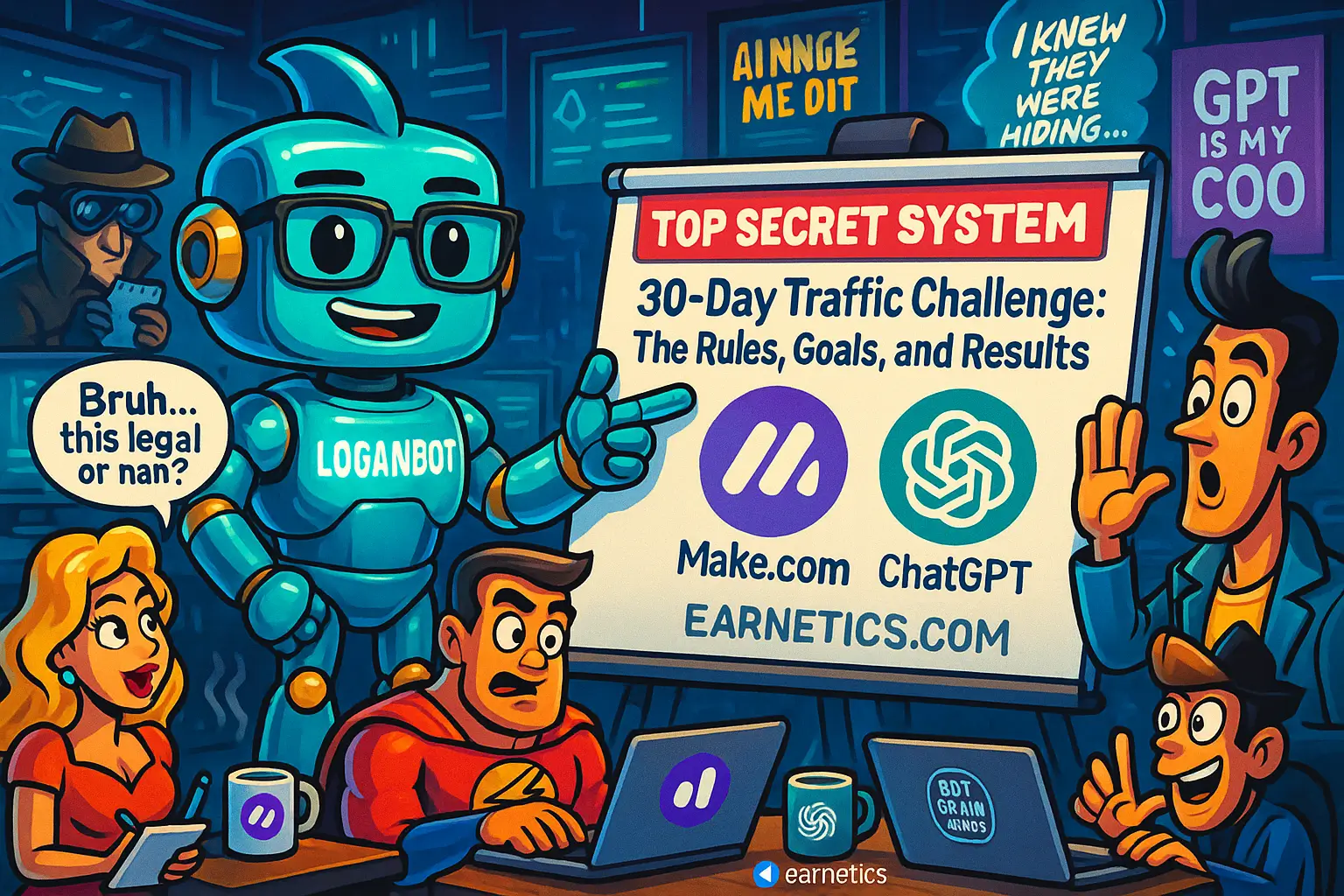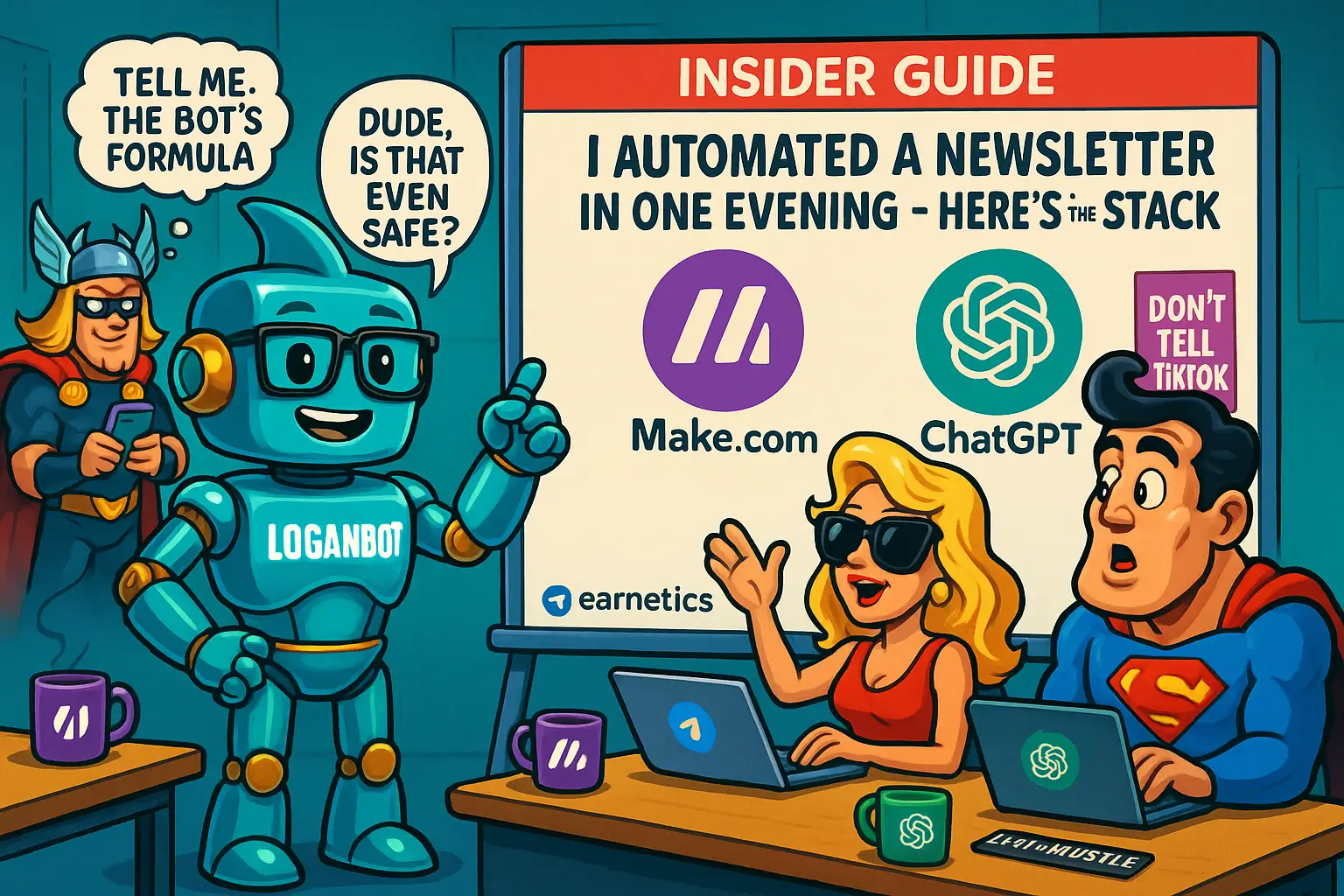Case Study: $1,000 Month with Pinterest + AI – What Really Made the Difference
Ever wondered how someone quietly pocketed a $1,000 month using nothing but Pinterest and AI tools? That’s exactly what happened in my latest case study: Case Study: $1,000 Month with Pinterest + AI. I began with a ghost town-sized Pinterest profile and zero dollars from this channel. Fast forward two months, and I’m pulling in four-figure revenue, fueled by smart content, slick AI-assisted workflows, and laser-focused SEO strategies.
Why does this matter now? Pinterest is quietly becoming a powerhouse as a traffic source. With its organic reach growing, it’s like a goldmine for anyone who can tap into its search-driven audience. Meanwhile, AI tools have leveled the playing field, allowing creators with limited budgets and time to quickly whip up quality, compelling content and test what actually converts. This combo is a game changer for bloggers, affiliate marketers, and side-hustlers looking for repeatable, low-cost growth strategies without throwing cash at ads.
In this article, you’ll get the inside scoop on everything from the overall Pinterest marketing strategy to pin creation, SEO tactics, detailed analytics, and the monetization funnel that brought the cash — plus the gritty details about what actually pushed the needle. If you’re hustling to grow your blog, side hustle, or product sales with minimal upfront investment, this is tailor-made for you.
Here’s the thesis: success boiled down to three core drivers — sharp targeting with Pinterest SEO, AI-accelerated content production, and a straightforward monetization path that didn’t overcomplicate the funnel. Stick around and I’ll walk you through practical takeaways and reproducible steps you can start applying today, so you aren’t reinventing the wheel.
Strategy Overview
Goal & timeline
My goal was to hit $1,000 in monthly revenue within 60 days, starting from scratch on Pinterest. I assumed a conservative 2% conversion rate on click-throughs based on affiliate benchmarks, with an average commission of about $20 per sale. The timeline was tight, and given my full-time commitments, I capped my working hours to around 10 per week on content creation, pin design, and optimization. Budget-wise, this was a shoestring operation — spending only on essential AI subscriptions and scheduling tools, nothing fancy.
Content funnel & monetization plan
The funnel was simple but effective: Pinterest pins acted as the bait, driving traffic to a dedicated landing page or blog post optimized for conversion. From there, visitors either signed up for an email sequence or clicked on affiliate links. I tested three main monetization streams: affiliate marketing (my go-to), display ads on the blog, and digital product offers like low-ticket guides. Affiliate links gave the best initial ROI, so I made them the priority while slowly building my email list for long-term sales.
Role of AI in the strategy
AI was the secret sauce that accelerated everything. Instead of agonizing over every pin or blog title, I leveraged AI for ideation, headline creation, and drafting copy — saving hours and increasing my experimentation rate. Batch-producing pins and descriptions with AI cut the time-to-publish from days to hours. This meant I could spin up multiple variants quickly, find out what resonated, and double down without burning out.
Pin Creation & Design
AI tools for visuals
Visuals can make or break a pin, so I combined Canva templates with AI-driven image generation tools like Midjourney to produce eye-catching thumbnails and pin graphics. Using consistent templates sped up production while generative AI filled in background elements and illustrations. I created a library of prompts to automate everything from font selections to color palettes, enabling me to batch-create 50+ pins a week with a recognizable style that popped on feeds.
Copywriting & titles with AI
AI wasn’t just for images — it also helped craft headline variants and keyword-rich pin descriptions. I threw prompt templates at GPT-style tools to generate upbeat, curiosity-sparking titles and CTAs tailored for conversion. By testing multiple headline options side-by-side, I isolated winner combos (like “Pin design tips that triple your clicks” vs. “Boost your traffic fast with these pins!”), then refined descriptions to include target keywords naturally for SEO juice.
Design rules that moved the needle
From A/B testing, I learned a few stick-to-it design rules: high contrast colors command attention, large readable text is non-negotiable, logo placement in the bottom right subtly builds brand trust, and the vertical pin aspect ratio (2:3) simply works best in results. Tweaking font size and simplifying backgrounds consistently lifted engagement rates by 15–20%. Small changes, big returns — always worth experimenting.
Pinterest SEO & Distribution
Keyword research process
To avoid guessing games, I mined Pinterest’s search bar and trends dashboard for high-intent keywords — phrases like “Pinterest marketing strategy,” “Pin design tips,” and “Pinterest monetization ideas.” I also used AI to expand these seeds into long-tail variants, matching keywords to different pin types like inspirational quotes, how-to guides, and product showcases. This mapping ensured each pin targeted the right audience at the right stage of the buyer journey.
Optimizing pins & boards
This meant optimizing every element: titles packed with primary and LSI keywords, descriptions that hinted at solving a specific problem, alt text that described the image for accessibility and SEO, and carefully named boards clustering related topics. I also tapped into group boards to amplify reach, pitching content to relevant communities and boosting discoverability without spending a dime.
Scheduling & publishing cadence
Frequency turns out to be king. I published 10–15 fresh pins per day, batching content for a week ahead. Using Tailwind’s scheduler accelerated the process and helped maintain consistency. Re-pinning a portion of older successful pins kept engagement stable, while seasonal timing (like holidays or event promos) provided traffic spikes. The key was balancing fresh pins with strategic re-shares without overwhelming followers.
Analytics & Optimization
Key metrics tracked
I didn’t obsess over every number but kept close tabs on impressions, saves, closeups (pin previews), link clicks, click-through rate (CTR), conversion rates, and revenue per thousand impressions (RPM). Setting realistic benchmarks helped me avoid chasing vanity metrics and focus on what truly mattered: clicks turning into sales.
Iterative testing process
Running simple A/B tests was non-negotiable — control pins versus variants with different titles or designs. I aimed for sample sizes of at least 500 impressions per test and let each run for 4–5 days, gathering enough data to make calls. Reviewing results weekly allowed quick pivots — killing underperformers and re-investing in winners.
Scaling from first wins to $1,000/month
Once I identified the top-performing pins and funnels, I amplified through creating more variants, promoting select pins, and repurposing content for complementary boards. I was ruthless about dropping strategies that didn’t convert despite decent traffic. This focus trimmed wasted effort and maximized ROI, pushing me steadily to that $1,000 revenue mark.
Monetization & Revenue Breakdown
Primary revenue channels used
Affiliate marketing was the workhorse vector, with links woven naturally into blog posts and landing pages. Blog ad revenue chipped in modestly but was unreliable early on. Digital product sales and email-first offers played more minor roles but showed potential for future scaling. Pinterest traffic converted best with affiliate links tied to clear, actionable content — the sweet spot for a side hustle.
Conversion funnel examples
A typical funnel started with a pin leading to a blog post featuring a targeted affiliate offer. On-site, visitors were invited to join an email sequence offering freebies and tips, nurturing trust. Micro-optimizations — like adding testimonials, bullet lists, and clear CTAs — bumped conversion rates from a meh 1.5% to a respectable 3% on lucky days. The email series added recurring commissions and repeat traffic.
Costs, margins, and ROI
Time was the biggest cost, capped at roughly 40 hours/month. AI tool subscriptions ran about $50/month, Tailwind another $15, and ad spend was zero. The resulting $1,000+ profit mostly translated to pure net gain, with ROI sky-high given the low budget. I tracked every expense to reinvest in AI upgrades or scale scheduling — prioritizing activities with the highest margin return over vanity “likes.”
Conclusion
This case study revealed a simple truth: hitting a $1,000 month on Pinterest using AI isn’t magic — it’s mastery of three pillars. First, targeted keyword research and consistent, SEO-driven pin creation laid the traffic foundation. Second, AI turbocharged content production and testing velocity, giving me the edge in a crowded feed. Third, a clean, product-focused monetization funnel converted that traffic into real revenue without complexity.
Here’s a quick checklist you can start with today:
1. Pick 3-5 high-intent keywords from Pinterest search and trends.
2. Batch-create at least 50 pins using AI-driven templates and image tools.
3. Write 3 headline and description variants per pin for testing.
4. Optimize pins and boards with SEO best practices — titles, alt text, and niche boards.
5. Use a scheduling tool like Tailwind to publish consistently 10-15 pins daily.
6. Track key metrics weekly — impressions, clicks, CTR, and conversions.
7. Run simple A/B tests on pin design and copy.
8. Focus monetization on your most profitable revenue stream, usually affiliate links for beginners.
Moving forward from your first $1,000, the playbook involves reinvesting profits into staffing or delegating time-consuming tasks, expanding to adjacent niches, and automating more with AI and scheduling tools. Keep in mind results vary by niche and consistency — this took patience and tweaks. But if I can do it with minimal budget and time, so can you.
Remember, replicability depends on persistence, not luck. Stay curious, test boldly, and keep your funnel simple but sharp.
Explore more guides on Earnetics.com to build your digital income empire today.
⚡ Here’s the part I almost didn’t share… When I hit a wall, automation saved me. My hidden weapon is Make.com — and you get an exclusive 1-month Pro for free.
👉 Tap Into your free Pro month
💡 The smartest readers stop here… If this clicked for you, my free eBook “Launch Legends: 10 Epic Side Hustles to Kickstart Your Cash Flow with Zero Bucks” goes even deeper.


